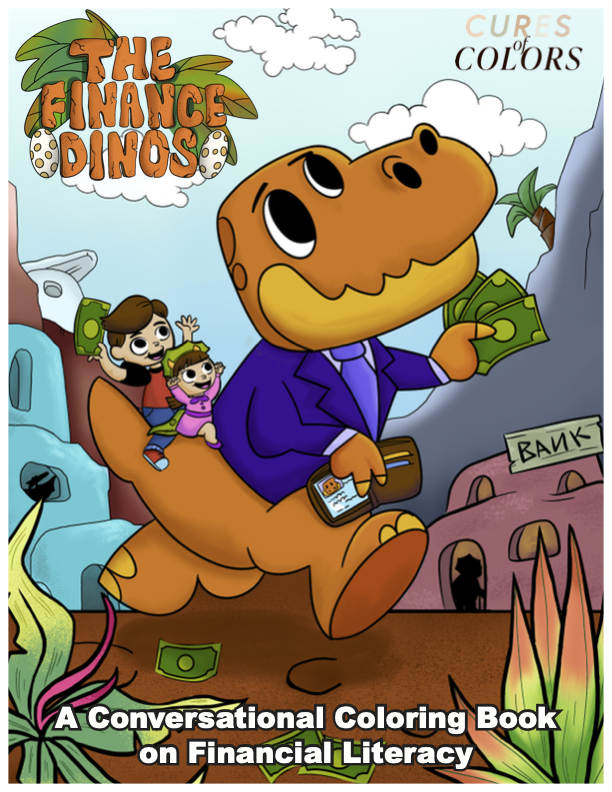Previous slide
Next slide



It’s important to teach kids about money so that they can grow up and make excellent financial decisions on their own. Financial literacy is a complex concept to explain, especially to young minds. However, there are many resources, tips, and lessons to help your little ones build good money habits. Continue reading to find ideas on how to talk about money with your kids and what might work best for your family.
Financial literacy is the understanding and use of skills that helps a person make knowledgeable financial decisions. In other words, it helps people learn how to manage money so that they can improve their financial well-being. Different topics to learn about include budgeting, debt, credit, and investing.
Although one may think children are too young to learn about money, it’s important to instill healthy financial lessons early on in life. This way, kids can better understand the world around them and have more time to develop strong financial habits and routines. Consider sharing the following lessons with your children.
It’s crucial for children to comprehend what work is, why it’s important, and how to earn money. By introducing the idea of work early on, little ones will see the value in being productive. As they grow up, they’ll be more inclined to work hard and positively contribute to society.
Some people save too much, while others spend too much. And many may not give money to help others. Too much of one thing can derail one’s finances. That’s why we need balance. By learning the importance of balancing all three, kids become financially well-rounded. They become generous, prepared, and contributive and get to see their hard work pay off in diverse ways.
Whether choosing how long to save money or which toy to buy, children should understand the importance of critically thinking before acting. Embracing this lesson can help them avoid making impulsive and unreasonable purchases. Additionally, thinking with value in mind can help kids understand how money works and how products and services compare.
There are countless habits to teach kids about money. The following ideas can act as a foundation. As children grow, they can start to learn more about paying bills and owning credit cards. Before that, they can do the following.
With a child’s age and personality in mind, adults can decide the best ways to explain money to them. The following ideas help integrate financial lessons into everyday family life and help incorporate money mastery into your family’s routine.
For kids who can’t yet be trusted with money, incorporating financial lessons into playtime is very effective. These teaching moments do not need to be complicated. However, it’s important to introduce kids to fundamental financial lessons and skills. Consider working on critical thinking and decision-making.
Before kids are old enough to have official savings accounts, it’s interesting for them to have savings at home. Think of piggy banks and jars. Additionally, consider creating three places for children to keep cash for spending, saving, and giving. This way, they can see and feel what they earn. This physical aspect helps developing minds understand money before it becomes virtual in online accounts and shopping.
Chores and allowance are long-standing traditions in parenting for good reason. Paying kids for completing small actions shows them how they can earn money at a young age. On a small scale, they can learn the basics and importance of work. Examples of chores include putting away belongings, folding clothes, dusting, and setting the table.
How do you decide how much to give kids for allowance? A common recommendation is to give children $1 per week for each year of their age. For instance, a six-year-old child would receive $6 per week for completing their chores. As they grow, you pay them more and show you trust them with more financial responsibility. Additionally, the average child completes approximately six hours of chores each week.
Shopping online can confuse young children because the virtual money is spent, but the physical money remains. If possible, consider shopping in person with little kids. This will help them understand how buying and spending happens. When they grow up and know more about technology, you can introduce online shopping, credit and debit cards, and more.
It’s important to teach kids about money because it will better prepare them for the future. What starts with counting coins becomes budgeting for buying a new car or negotiating salaries. Small and regular actions show value in the long run. Consistency is key to teaching habits, so make sure to keep discussing money with your family.
Browse Cures of Color’s collection of conversational coloring books to continue your children’s learning.
Follow us on Instagram for updates on our upcoming book on financial literacy.
Have you joined our email list yet? Subscribe today to never miss another update!

Cures of Colors is a 501(c)(3) nonprofit organization.